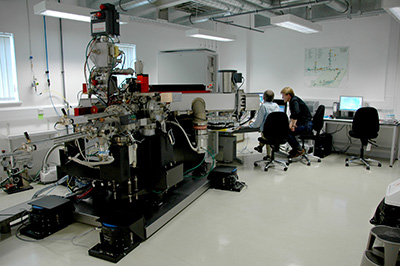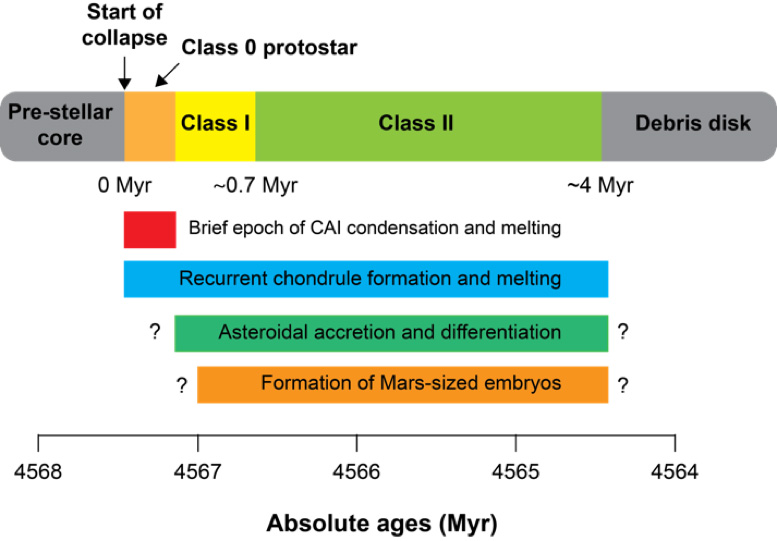Marcopolo
Asteroid Sample Return

MarcoPolo
Sample Analyses
In order to answer the main science questions that MarcoPolo-M5 seeks to address many of the measurements require exceptionally high levels of precision, accuracy and sensitivity. Such measurements cannot be performed by a robotic spacecraft and therefore require a sample returned to terrestrial laboratories where instrumentation is unconstrained by mass, power, stability etc. (such as the large NanoSIMS instrument shown below) and multiple investigations using a suite of instruments can be applied to each part of the sample. Examples of the planned analyses include the dating of major events in the history of a sample such as the time interval between the end of nucleosynthesis and agglomeration, the duration of agglomeration, time of accumulation, crystallisation age, the age of major heating and degassing events, the time of metamorphism, the time of aqueous alteration, and the duration of exposure to cosmic radiation.  One of the main objectives of these analyses is the identification and characterisation of organic materials, which may have contributed to the origin of life on Earth. Another major goal is understanding the volatile inventory of such a primitive body, characterising the isotopic signatures of the volatile components to identify the origin of the volatile components and whether such bodies played a major role in the delivery of water and other volatiles to the early Earth.
One of the main objectives of these analyses is the identification and characterisation of organic materials, which may have contributed to the origin of life on Earth. Another major goal is understanding the volatile inventory of such a primitive body, characterising the isotopic signatures of the volatile components to identify the origin of the volatile components and whether such bodies played a major role in the delivery of water and other volatiles to the early Earth.
In almost all cases, no single measurement, or type of measurement, will provide the complete answer to any of the questions. Instead, our understanding will be derived from the results of many analyses of different components of the returned samples, and by a plethora of techniques. The figure below shows the example of an instrument and related measurements that can be done to infer absolute ages.
 Absolute ages for the formation of solar nebula components, i.e. Calcium, Aluminium-rich Inclusions (CAIs) and chondrules, can be determined by radiometric dating techniques. This requires very specialised mass spectrometer systems such as thermal ionisation mass spectrometry (TIMS) or inductively coupled plasma mass spectrometry (ICPMS) to provide the high levels of precision, sensitivity and mass resolution for the accurate isotope ratio measurements of trace elements. Analyses of sub-samples permit ages of more than 4.5x109 years with uncertainties of less than 106 years to be acquired and provide exceptional levels of detail about the birth of the solar system as shown in the age of chondrules shown above, graphy courtesy of Martin Bizzarro modified from Connelly et al. 2012.
Absolute ages for the formation of solar nebula components, i.e. Calcium, Aluminium-rich Inclusions (CAIs) and chondrules, can be determined by radiometric dating techniques. This requires very specialised mass spectrometer systems such as thermal ionisation mass spectrometry (TIMS) or inductively coupled plasma mass spectrometry (ICPMS) to provide the high levels of precision, sensitivity and mass resolution for the accurate isotope ratio measurements of trace elements. Analyses of sub-samples permit ages of more than 4.5x109 years with uncertainties of less than 106 years to be acquired and provide exceptional levels of detail about the birth of the solar system as shown in the age of chondrules shown above, graphy courtesy of Martin Bizzarro modified from Connelly et al. 2012.
Register your support
If you would like to register your support for the MarcoPolo-M5 mission please go to our registration form page:
This will generate an e-mail to Ian Franchi, who will add you to the list of supporters and mailing list.